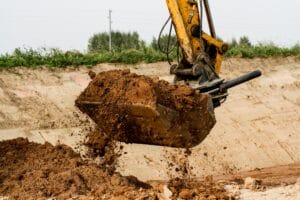Dry utilities exist underground and serve vital roles in the general infrastructure of towns, cities, and villages. As new property developments happen, there’s an increased need for utility detection services. Understanding how buried utilities are mapped out will aid projects by ensuring new properties receive the necessary utilities while also assisting with general utility maintenance.
The question is, how do you determine the location of buried utilities? A dry utility service provider will help, and these are the typical methods used to build a physical picture of the underground infrastructure:
Utility Provider Records
All projects should begin with research into the utility provider records. These can be obtained online—and usually for a fee—and offer an overview of how dry utilities were initially installed. If any work was carried out to extend utility lines, this may also be present in the records.
Think of it as a starting point; you see how and where the utilities were placed, but you need to check if all remains the same.
Vacuum Excavation
Often called “potholing,” vacuum excavation involves creating small holes in soil using pressurized air. The soil is then vacuumed up, giving you a way to see below ground and note all the dry utility lines. Vacuum Excavation is cheaper, faster, and less invasive than manual digging and backhoe excavation while being environmentally friendly.
Hydro Excavation
This is another form of potholing where pressurized water is used instead of air. The same process happens, revealing a small hole to check where utilities lie. Both methods can be used alongside the utility records to note any changes from the initial blueprints. Hydro excavation is increasing in popularity, according to Vector Vacuums, a manufacturer of Hydro Vacuums, due to its minimal risk of injury or damage, accuracy, ability to be used in Winter with hot water, and speed that it can complete a job.
Electromagnetic Locating
The electromagnetic locating method is the most frequently used method of determining the location of buried utilities. It involves applying electromagnetic radio frequency to the ground, sending waves beneath the surface to contact any materials. It’s extremely accurate, as utility lines are conductive, so the waves bounce back to the equipment, and you can mark where things are without doing any digging or construction work.
The only downside is that electromagnetic locating works for metal utility lines. It will go unnoticed if piping is made from plastic or other non-metal materials.
Ground Penetrating Radar (GPR)
GPR is extremely effective at utility detection because it can highlight metal and non-metal materials. Again, radio waves are used to detect objects and bounce the signal back above ground, helping operators paint a clear picture of the subterranean utility lines.
Acoustic Systems
This is one of the more traditional methods of identifying dry utilities. In the past, the acoustic method consisted of putting your ear to the ground and banging on the floor. You’d then detect the vibrations through the ground and could spot certain pipelines. Nowadays, things have become slightly more advanced, such as using probes to detect specific vibrations and plot the course of a utility line.
Nevertheless, this method isn’t hugely popular due to its reliance on acoustic sounds as it depends on a quiet environment.
Metal Detection
Advanced metal detectors are sometimes used to determine where dry utilities are installed. An operator will take the initial utility company records and place the detector where the plans say the utility lines are. They will move around and receive confirmation from the metal detector if pipes are present. This can also display when new pipes have been installed, or lines have been extended, yet there are no physical records of either.
Other Geophysical Methods
We’ve mentioned some geophysical methods already – such as GPR and electromagnetic locating – but you may also use other techniques. Some include electro-resistivity imaging (ERI) or seismic refraction.
What Is The Best Way To Determine Dry Utility Locations?
There is no “one size fits all” approach to subsurface utility locating. It depends on the situation and why the utilities are being located.
For this reason, it’s often best to use a combination of methods. This provides a better overview of the situation and allows for a higher degree of accuracy. Every method has its strengths and weaknesses, so if you only use one, you run the risk of missing important things and creating an inaccurate picture of the buried infrastructure.
If you require subsurface utility locating for an upcoming project, DFM Development Services can help with dry utility coordination. View our service sheet here to learn about our capabilities and how we’ll assist you in plotting accurate utility maps, and contact us today to schedule a consultation.




